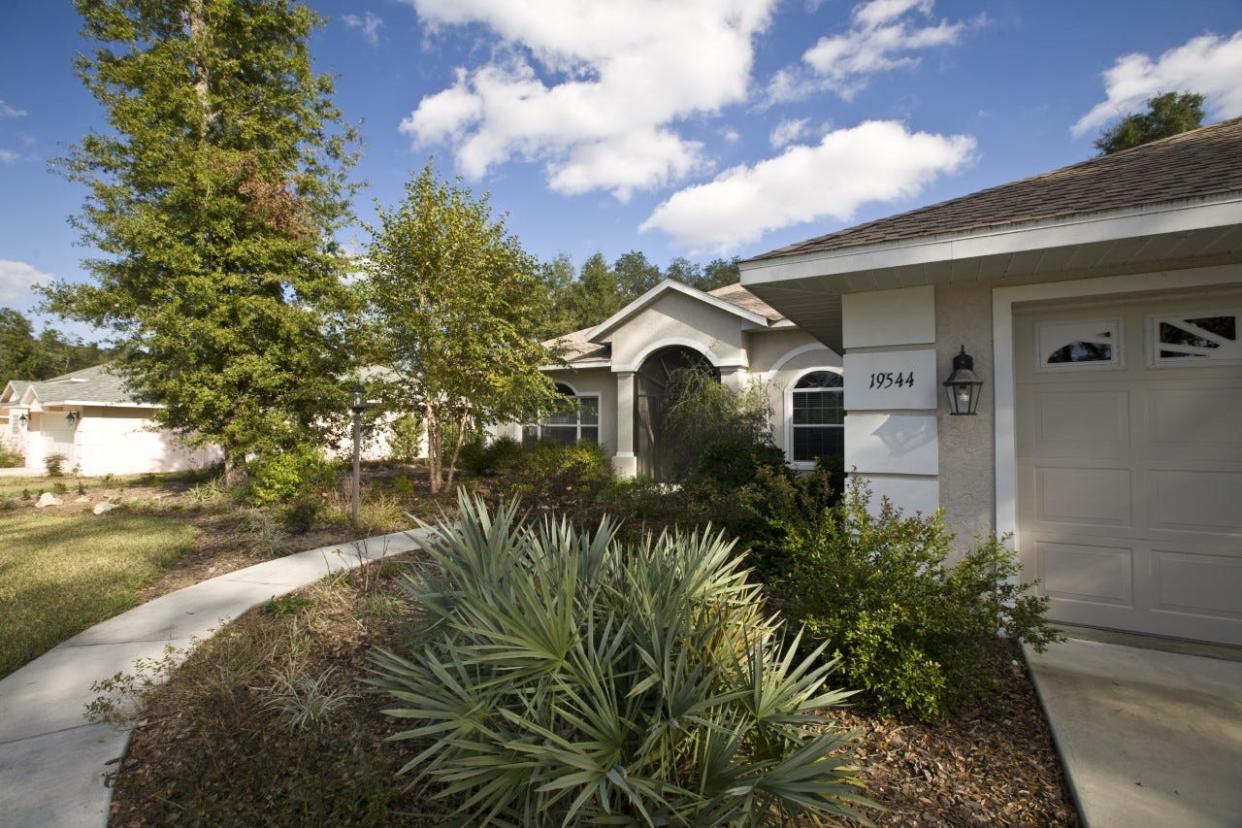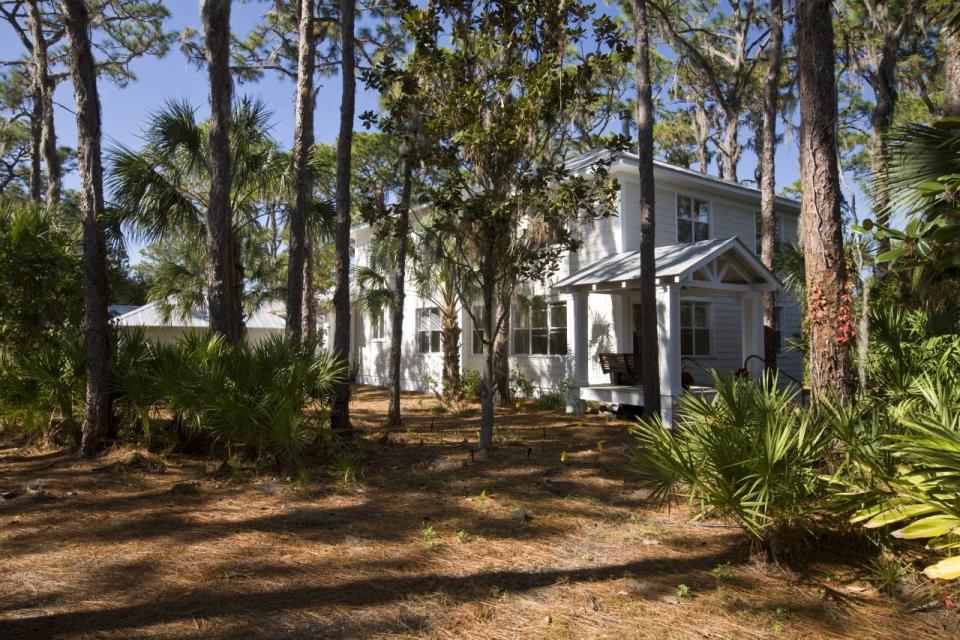Garden Q&A: How to work with your neighbors on yard issues

What can I do about the neighbors' yard? They are just letting the yard go wild. There are snakes and other animals living there. The neighbors on the other side are spraying weed killer and the drift gets on my plants and kills them. The insecticide spray they use is killing my bees and butterflies. They won't remove their tree whose limbs are damaging my roof. They filled the drainage swale and now my yard has much more standing water.
Master Gardener Volunteers get this question from both sides of the fence. With multiple descriptions of the problem the neighbors are causing, what is the right thing to do?
First, talk to the neighbors, they may not realize what they are doing is undesirable. Please use “I” language in your descriptions and not “you should.” Quote or use printouts of the University of Florida IFAS research to backup your request, if needed.
For instance, I live in a neighborhood with wire fences. The previous neighbors' beagles kept climbing the old four-foot rusty wire chain link fence, so we replaced it with a taller wire fence. We like the wire fences, as they don't block the breeze and we can see the neighbor we are talking to.
One morning I walked out to find the new owner of that house spraying weed killer on the native passion vines and scarlet honeysuckle I had growing on the fence. He was surprised that I wanted vines on my new fence. I explained that I grew the vines on my fence for the butterflies and hummingbirds and asked him to please not spray them. As a compromise, I'd trim the vines on the fence at least once a year.
It might also be a good idea to check property surveys to see who owns the fence. A neighbor with a wood fence may not want your vines climbing their fence, as vegetation holds moisture next to the surface leading to mold and decay.

You can't just let a yard in an urban area go wild naturally; it will not revert to pine flat woods or oak hammocks, even though the natural transitions of land in high rainfall areas is to forest and only briefly a wildflower meadow. Urban areas have too many dormant seeds from aggressive or invasive trees and weeds that will sprout.
Most of the tree seedlings that come up will be in the wrong spot or be undesirable. It is advisable to evaluate any tree seedlings before you let them grow. Narrow side yards do not have room to accommodate large trees and your neighbor may not want it growing on the property line.
Most cities have ordinance codes against nuisance vegetation and storage of junk that can harbor rodents, etc. A maintained landscape with Florida native plants does not qualify as nuisance vegetation. If you do native landscaping, follow a few of these recommendations to reassure your neighbors that the yard is managed:
• Have well defined wildflower beds with paths and groups of like plants.
• Have some defined architectural elements like a bird bath, bird houses or sitting area, etc.
• Plan the wildflower bed like a perennial bed, with some lower growing plants in front and repetition or grouping of plants, building up to higher wildflowers or shrubs in the rear or center of the bed. I keep some folding decorative fence available to scoop up sprawling wildflowers.
• Mow or pull plants that sprout in your lawn or paths.
You or your neighbors may want to mow or edge along the property line to keep some natives in bounds, perhaps with a boundary path. I don't want to use weed killers on my lawn, so my neighbor edges along their property line to keep my Florida betony from invading their lawn. Her lawn is brown after frost, mine is green with mown betony.
Another landscape style that bothers some who prefer clipped hedges and monoculture lawns are permaculture or food forest landscaping. Landscaping design principles still apply; besides, you need some sunlight for lower crops, in addition to your fruit trees. You will still need to manage a food forest or permaculture landscape. No urban landscape is without maintenance.
Pollinators, wildlife and our environment are being seriously impacted by urbanization and over use of insecticides, herbicides and fertilizers. These alternative landscapes styles help to mediate some of the impact to our environment.
A state of Florida judicial decision stated that a general rule is a property owner is free to reasonable use of their property. If you live in an HOA managed neighborhood, you will have another level of property management. Florida-Friendly gardens like wildflower beds should be allowed, but work with your home owners association to get their approval.
If you prefer the look of an expansive lawn and clipped hedges, you will need to follow the labels on herbicides, insecticides and fertilizers. Florida-Friendly principles allow that kind of landscaping, but have directions for protecting the environment.
Herbicide and insecticide labels usually state to apply on a calm day so wind does not blow it on to other plants or yards. The labels frequently state to spray early or late in the day when most pollinators are not out. Pesticides, herbicides and fertilizers can be washed with rain or irrigation into waterways or percolate into our ground water (the aquifer is our drinking water). Please don't spray your neighbor's plants, even if they are encroaching onto your property.
You may prune the plants off at the property line. This applies to unwanted tree limbs and roots also. Dead trees that are a hazard to property or persons would need to be removed.
That low area that runs through the front or rear of your yard should not be filled in. Today's drainage swales serve the same purpose as yesterday's ditches. They drain water away from the houses. The grading is shallow with a grade toward a pond or storm drain and should not be altered by filling in the area or blocking the flow. I know that when we are getting some of our torrential downpours for days on end, it seems that they are not draining. But they are serving their purpose to keep water away from the house.
Usually there is also a shallow swale between houses, also. Irrigation systems can over water that area, if both neighbors are irrigating the same area. You may not even need to run the irrigation system if the area gets extra water from roof or downspout runoff. You can also plant plants by the drainage swale that like wet feet and will transpire excess water. Just don't block the flow.
Good neighbors are wonderful to have and sometimes we need to compromise a little, but we can still have a yard and garden that pleases us and adds interest to the neighborhood. Introduce yourself to the neighbors and have a friendly chat about gardening.
For Florida-Friendly principles, check out this link: https://ffl.ifas.ufl.edu/resources/publications/. If you want more information on Jacksonville's municipal codes you can check out this link: https://library.municode.com/fl/jacksonville/codes/code_of_ordinances.
Brenda Daly is a Master Gardener Volunteer with the Duval County Extension Service and the University of Florida/IFAS. For gardening questions, call the Duval County Extension Office at (904) 255-7450 from 9 a.m. to noon and 12:30 to 3:30 p.m. Monday-Friday and ask for a Master Gardener Volunteer.
This article originally appeared on Florida Times-Union: Garden Q&A: How to work with your neighbors on yard issues

